
Ethiopia, officially the Federal Democratic Republic of Ethiopia, is a landlocked country located in the Horn of Africa region of East Africa. It shares borders with Eritrea to the north, Djibouti to the northeast, Somalia to the east and southeast, Kenya to the south, South Sudan to the west, and Sudan to the northwest. Ethiopia covers a land area of 1,112,000 square kilometres. As of 2023, it is home to around 126.5 million inhabitants, making it the 13th-most populous country in the world, the 2nd-most populous in Africa after Nigeria, and the most populated landlocked country on Earth. The national capital and largest city, Addis Ababa, lies several kilometres west of the East African Rift that splits the country into the African and Somali tectonic plates.

Axum, also spelled Aksum, is a town in the Tigray Region of Ethiopia with a population of 66,900 residents. It is the site of the historic capital of the Aksumite Empire, a naval and trading power that ruled the whole region in addition parts of West Asia as Saudi Arabia, and Yemen. It ruled the region from about 400 BCE into the 10th century. Axum is located at the La’ilay Maychew district of Ethiopia.
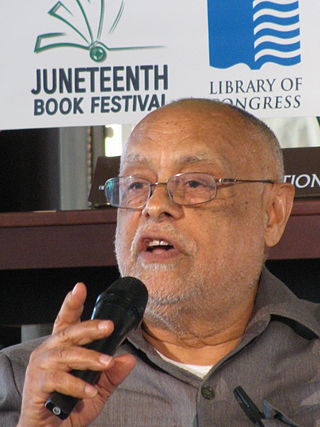
Haile Gerima is an Ethiopian filmmaker who lives and works in the United States. He is a leading member of the L.A. Rebellion film movement, also known as the Los Angeles School of Black Filmmakers. Since 1975, Haile has been a film professor at Howard University in Washington, D.C. He is best known for Sankofa (1993), which won two awards.
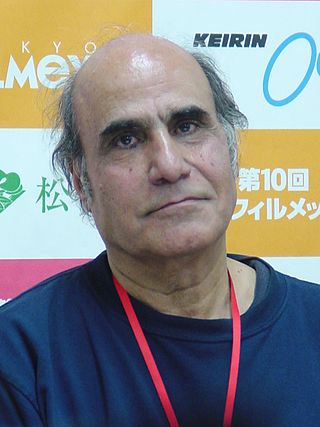
Amir Naderi is an Iranian film director, screenwriter, and photographer. He is best known for The Runner and Vegas: Based on a True Story.
David Seals was an American writer.
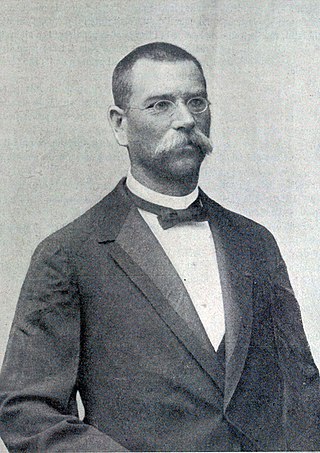
Alfred Heinrich Ilg was a Swiss engineer and First Minister of State to Ethiopian Emperor Menelik II. He was born in Frauenfeld, Switzerland and died in Zurich.

Chéri Samba or Samba wa Mbimba N’zingo Nuni Masi Ndo Mbasi is a Congolese painter from the Democratic Republic of Congo. He is one of the best known contemporary African artists, with his works being included in the collections of the Centre Georges Pompidou in Paris and the Museum of Modern Art in New York. A large number of his paintings are also found in The Contemporary African Art Collection (CAAC) of Jean Pigozzi. He has been invited to participate in the 2007 Venice Biennale. His paintings almost always include text in French and Lingala, commenting on life in Africa and the modern world. Samba lives in Kinshasa and Paris.

Aïda Muluneh is an Ethiopian photographer and contemporary visual artist based in Addis Ababa. She does commercial work as well as fine-art photography and photojournalism in Addis Ababa and elsewhere.
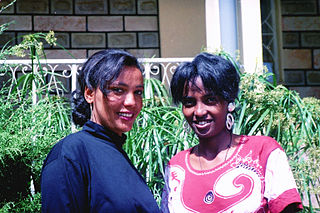
There have been several studies concerning women in Ethiopia. Historically, elite women in Ethiopia have been visible as administrators and warriors. This never translated into any benefit to improve the rights of women, but it had meant that women could inherit and own property and act as advisors on important communal matters. As late as the first part of the 20th century, Queen Menen, consort of Emperor Iyasu IV, had a decisive role in running the Ethiopian Empire. Workit and Mestayit regents to their minor sons have been held responsible for their provinces. They owed their rights to landed property because of a special type of land tenure that expected tenants to serve as militia to overlords, irrespective of gender. In 1896, Empress Tayetu Betul, wife of Emperor Menelik II, actively advised the government and participated in defending the country from Italian invasion. Prominent and other landowning women fought against the second invasion in 1935–41. With the assistance of European advisors, women in the ensuing period were kept out of the army and politics, even as advisors. Instead, they were restricted to family and household work of raising children and cooking. With a steady increase in female representation in education, they have started to undertake nursing, teaching, and other similarly supportive roles. Over the 2018–2019 period, their gradual participation in state politics has been increasing at a steady pace.

Eritrea, officially the State of Eritrea, is a country in the Horn of Africa region of Eastern Africa, with its capital and largest city at Asmara. It is bordered by Ethiopia in the south, Sudan in the west, and Djibouti in the southeast. The northeastern and eastern parts of Eritrea have an extensive coastline along the Red Sea. The nation has a total area of approximately 117,600 km2 (45,406 sq mi), and includes the Dahlak Archipelago and several of the Hanish Islands.

Italian Eritreans are Eritrean-born citizens who are fully or partially of Italian descent, whose ancestors were Italians who emigrated to Eritrea during the Italian diaspora, or Italian-born people in Eritrea.
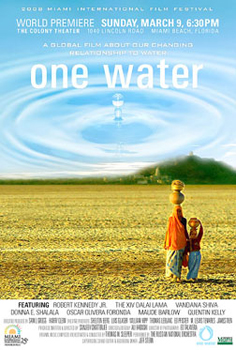
One Water is a 2008 documentary film directed by Sanjeev Chatterjee and Ali Habashi. The film premiered at the 2008 Miami International Film Festival on 22 February 2008.
Abdulkadir Ahmed Said is a prominent Somali film director, producer, screenwriter, cinematographer and editor.

Sarraounia is a 1986 historical drama film written and directed by Med Hondo. It is based on a novel of the same name by Nigerien author Abdoulaye Mamani, who co-wrote the screenplay. The novel and film concern the real-life Battle of Lougou between Azna queen Sarraounia and the advancing French Colonial Forces of the Voulet-Chanoine Mission in 1899. Sarraounia was one of the few African tribal leaders that resisted the advances of French expansionists Paul Voulet and Julien Chanoine. The film won the first prize at the Panafrican Film and Television Festival of Ouagadougou (FESPACO) and was critically well received.
Clando is a 1996 drama film from Cameroon directed by Jean-Marie Teno. Initially set in Douala, the film explores the experiences of Anatole Sobgui, a man who loses his job as a computer programmer and begins working as an unlicensed cab driver who is arrested and tortured by a corrupt regime for printing anti-government leaflets. Left sexually and psychologically impotent by the experience, his life begins to deteriorate rapidly. He migrates to Cologne to find his former employer's son, Chamba. Here, he falls in love with a local, a political activist named Irene, who convinces him to return home to Cameroon.

The Holland Pop Festival, also known as the Kralingen Music Festival, was a pop and rock music festival held in the Kralingse Bos, in the Kralingen neighbourhood of Rotterdam in the Netherlands, on 26–28 June 1970.

A debtera is an itinerant religious figure in the Ethiopian and Eritrean Orthodox Tewahedo Churches, and the Beta Israel, who sings hymns and dances for churchgoers, and who performs exorcisms and white magic to aid the congregation. A debtera will claim an ecclesiastical identity and behave as in minor orders. They may in fact be officially ordained as deacons, or may act outside the Church hierarchy. They are usually feared by the local population.

Imruh Bakari is a film maker and writer born in 1950 on St Kitts, who is also referred to as Imruh Bakari Caesar or Imruh Caesar. He currently teaches Film Studies at the University of Winchester. He works in the UK and a number of African countries in the area of culture and the creative industries.

The Cinema of Ethiopia and the film industry in general are relatively recent phenomena in Ethiopia. The Ethiopian film industry is growing but faces many problems that have prevented it from fully flourishing. Historically, live stage theater enjoyed more popularity in Ethiopia, creating a handful of relatively successful stage actors. Ethiopian films began modernizing in the 2000s, implementing Amharic, but due to wide home video and DVD distribution, they are often frustrated by copyright infringement in the presence of piracy. This was reduced in the early 2010s with the intervention of the government and the imposition of policy. Despite recent developments, the Ethiopian film industry continues to lack quality compared to modern world cinema and has a low budget amateurish style.
Crispin Gurholt is a Norwegian artist based in Oslo and Berlin, known for his Live Photo projects since 2000. Live Photos are site-specific, live installations, where the artist stages people in carefully directed tableaus. The settings are often trivial and ordinary – a bookshop, a street corner, a hairdresser`s. The models, posing in a frozen photographic moment, are viewed by the audience through a natural or artificial barrier such as a shop window or a sheet of mounted plexiglass. The live performances normally have a duration of two hours.
















